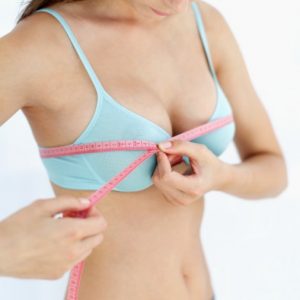Shapelier, Proportionate Breasts
 Breast reduction can help relieve the physical discomfort associated with having large breasts. By reducing a significant portion of excess tissue, fat and skin, breast reduction improves the size and shape of the breasts for a lifted and more youthful appearance. Dr. Mark H. Schwartz’s patients are overwhelmingly pleased with the results of a breast reduction procedure that affords them the freedom and comfort to wear the type of clothing they want, exercise and participate in swimming, running and other athletic activities with greater confidence.
Breast reduction can help relieve the physical discomfort associated with having large breasts. By reducing a significant portion of excess tissue, fat and skin, breast reduction improves the size and shape of the breasts for a lifted and more youthful appearance. Dr. Mark H. Schwartz’s patients are overwhelmingly pleased with the results of a breast reduction procedure that affords them the freedom and comfort to wear the type of clothing they want, exercise and participate in swimming, running and other athletic activities with greater confidence.
Candidates for Breast Reduction
Breast reduction candidates have oversized, heavy breasts. Often, their nipples are oversized and point toward the floor. Women frequently complain of back/neck/shoulder pain, difficulty breathing, skin indentations from bra straps, poor posture and limited physical activity. Emotionally, women often feel self-conscious or embarrassed by the shape or position of their breasts. They may have trouble finding clothing that fits and flatters their bodies.
Suitable candidates should be in good health, not smoke and not have any pre-existing medical conditions that could increase the risks of surgery. They should have adequate skin elasticity, so the skin tightly hugs the breasts after surgery.

View More Before & After Photos
Breast Reduction Surgery Details
Dr. Schwartz performs breast reduction on an outpatient basis at his on-site surgical facility in New York City. Anesthesia is administered for complete patient comfort.
Dr. Schwartz makes the incision in a variety of patterns.
Traditional anchor-shaped incision : appropriate for women with extremely large breasts. The incision is made around the areola, continuing down the front of the breast and across the crease under the breast.
Vertical “lollipop”-shaped incision: appropriate for women with moderately large breasts. The incision is made around the areola and down the front of the breast, stopping at the crease. Most breast reductions are performed with this type of limited scar.
Through the incisions, Dr. Schwartz removes excess fat, glandular tissue and skin from the lower portion of the breast. He repositions the nipple/areola higher on the breast mound and corrects downward-pointing nipples. Then, he wraps the remaining breast skin around the newly shaped breast mound, and closes the incisions with dissolvable sutures.
Dr. Schwartz is also experienced in “scarless” breast reduction, which utilizes liposuction techniques only. This approach is not suitable for everyone, and is used in a small percentage of cases. Liposuction only removes fatty tissue (not glandular tissue) and does not improve the size, position or direction of the nipples. Liposuction-only breast reduction is more common in men with gynecomastia (enlarged breasts).
Recovering from Breast Reduction

Soreness, swelling and bruising are common (and temporary) side effects after surgery. They should disappear within a few days. Breast reduction patients must limit physical activity as they recover from surgery, and avoid bending, lifting heavy objects and exercising. The patient can gradually incorporate more activity.
Dr. Schwartz will examine your breasts periodically during the recovery period to determine how the scars are healing, answer questions and advise when it is safe to return to work, socializing and exercising.
Breasts look noticeably smaller immediately after surgery, and results continue to improve as the post-operative side effects subside. The scars from a breast reduction will fade over time and will be well hidden under clothing and bathing suits.
Schedule a Consultation
Schedule a consultation with Dr. Mark H. Schwartz or to find out more about breast reduction.









